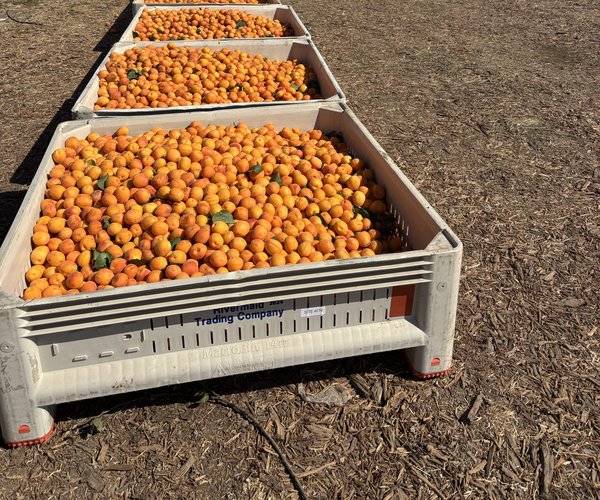H1N1 Update
In California, as of Oct. 10
• 3,051 hospitalizations, ICU cases and deaths
• 219 deaths
In the U.S., during the week of Oct. 4-10
• 4,093 specimens tested positive for H1N1
• 10 pediatric deaths were associated with H1N1
• 41 states, including California, reported widespread influenza activity
In California, as of Oct. 10
• 3,051 hospitalizations, ICU cases and deaths
• 219 deaths
In the U.S., during the week of Oct. 4-10
• 4,093 specimens tested positive for H1N1
• 10 pediatric deaths were associated with H1N1
• 41 states, including California, reported widespread influenza activity
For months health officials at all levels have been touting the H1N1 vaccine as the best way to avoid contacting the flu virus, but as the flu season has gotten underway, the vaccine remains in short supply.
The Centers for Disease Control and Prevention stated that manufacturing delays have caused a slow down in the release and distribution of the H1N1 vaccine. The CDC had expected to have 40 million doses of the vaccine by the end of October. Now, that number is likely to be between 28 million and 30 million.
Anne Schuchat, the director of the National Center for Immunization and Respiratory Diseases at the CDC said the delays have been caused by problems with growing the vaccine and the time it takes to test for the right amount of potency.
“There are many steps involved with producing vaccine and then with testing and releasing vaccine and so, unfortunately, we won’t have as much by the end of this month as we had hoped to,” Schuchat said. “We are not cutting any corners in the safety of the production of this vaccine or the testing and oversight of the vaccine and it’s very important to us that this process be done carefully and safely.”
Phoebe Leung, a spokesperson for the Stanislaus County Health Services Agency, said the department is still awaiting their initial shipment of the injectible vaccine.
As of Oct. 14, 11.4 million doses of the flu vaccine were available to be ordered and eight million of those doses had been picked up by state health departments, according to the CDC. The CDC hopes to have widespread availability of the vaccine by the start of November.
The vaccine has been available in nasal spray form since Oct. 5, but because of limited quantities is only being given to a limited number of people. Stanislaus County received an initial 4,600 doses of nasal H1N1 vaccine and it was doled out to local medical offices and health providers.
“The initial quantities of the vaccine is limited, and the California Department of Public Health has directed that all of it be used to immunize children who are 2 years old to just under 10 years of age,” said Dr. John Walker, Stanislaus County Health Officer. “The vaccine has been sent directly to medical providers who see this population.”
The county health agency expects to receive the injectible vaccines in the next few weeks, Leung said. The vaccines will be given out first to people considered to have the highest risk of developing serious complications, which includes: Pregnant women, health care workers, people living with or caring for infants 6 months of age, emergency medical personnel, children from 6 months to 24 years of age, and people ages 25 years to 64 years with chronic medical conditions.
The CDC said the nasal spray is appropriate for people between the ages of 2 years to 49 years, but should not be used by pregnant women or people with chronic health conditions, like asthma.
The delay in the production and distribution of H1N1 vaccine comes as the spread of H1N1 is growing. The CDC reports that the virus is now widespread in 41 states up from 37 the previous week. The death rate for children also is increasing at a disturbing rate. The CDC said 43 children died from the H1N1 virus in August and that half of those deaths were between 12 and 17 years old and in good health until they got sick. A typical seasonal flu causes the death of 40 to 50 children between September and May each year, according to the CDC.
The warning signs for parents to look for in their children include a child that is difficult to wake or is not eating; has trouble breathing; is turning blue or grayish in color; and if they appear to be getting better and then suddenly worsen.
“That can be a sign that a second bacterial pneumonia is coming in on the heels of influenza and that’s something you need to take seriously and get in touch with your health care provider,” Schuchat said.
State and local health agencies may be clamoring for more vaccine, but the number of how many people will line up for the shot is uncertain.
The Pew Research Center for the People and the Press surveyed a little over 1,000 adults and 47 percent said they wouldn’t get the vaccine.
“It’s important for people to know that the H1N1 influenza vaccine is being made exactly the same way that the seasonal flu vaccines are made,” Schuchat said. “A hundred million people get those every year and we believe there’s a very strong safety record for them including many, many pregnant women who get those vaccines every year and many, many children who get those vaccines every year.”
The county health agency will conduct H1N1 flu clinics later this fall when the H1N1 vaccine is available in larger quantities. County H1N1 flu clinics are expected to start some time in mid to late November and continue into January. A complete list of dates, times and locations will be released when the clinic schedule is finalized.
“Our H1N1 clinics are designed to be a ‘safety net’ for the community. Most people should get the vaccination from their regular provider,” said Nancy Fisher, Director of Nursing and Assistant Director at the Health Services Agency.
To contact Sabra Stafford, e-mail sstafford@turlockjournal.com or call 634-9141 ext. 2002.
The Centers for Disease Control and Prevention stated that manufacturing delays have caused a slow down in the release and distribution of the H1N1 vaccine. The CDC had expected to have 40 million doses of the vaccine by the end of October. Now, that number is likely to be between 28 million and 30 million.
Anne Schuchat, the director of the National Center for Immunization and Respiratory Diseases at the CDC said the delays have been caused by problems with growing the vaccine and the time it takes to test for the right amount of potency.
“There are many steps involved with producing vaccine and then with testing and releasing vaccine and so, unfortunately, we won’t have as much by the end of this month as we had hoped to,” Schuchat said. “We are not cutting any corners in the safety of the production of this vaccine or the testing and oversight of the vaccine and it’s very important to us that this process be done carefully and safely.”
Phoebe Leung, a spokesperson for the Stanislaus County Health Services Agency, said the department is still awaiting their initial shipment of the injectible vaccine.
As of Oct. 14, 11.4 million doses of the flu vaccine were available to be ordered and eight million of those doses had been picked up by state health departments, according to the CDC. The CDC hopes to have widespread availability of the vaccine by the start of November.
The vaccine has been available in nasal spray form since Oct. 5, but because of limited quantities is only being given to a limited number of people. Stanislaus County received an initial 4,600 doses of nasal H1N1 vaccine and it was doled out to local medical offices and health providers.
“The initial quantities of the vaccine is limited, and the California Department of Public Health has directed that all of it be used to immunize children who are 2 years old to just under 10 years of age,” said Dr. John Walker, Stanislaus County Health Officer. “The vaccine has been sent directly to medical providers who see this population.”
The county health agency expects to receive the injectible vaccines in the next few weeks, Leung said. The vaccines will be given out first to people considered to have the highest risk of developing serious complications, which includes: Pregnant women, health care workers, people living with or caring for infants 6 months of age, emergency medical personnel, children from 6 months to 24 years of age, and people ages 25 years to 64 years with chronic medical conditions.
The CDC said the nasal spray is appropriate for people between the ages of 2 years to 49 years, but should not be used by pregnant women or people with chronic health conditions, like asthma.
The delay in the production and distribution of H1N1 vaccine comes as the spread of H1N1 is growing. The CDC reports that the virus is now widespread in 41 states up from 37 the previous week. The death rate for children also is increasing at a disturbing rate. The CDC said 43 children died from the H1N1 virus in August and that half of those deaths were between 12 and 17 years old and in good health until they got sick. A typical seasonal flu causes the death of 40 to 50 children between September and May each year, according to the CDC.
The warning signs for parents to look for in their children include a child that is difficult to wake or is not eating; has trouble breathing; is turning blue or grayish in color; and if they appear to be getting better and then suddenly worsen.
“That can be a sign that a second bacterial pneumonia is coming in on the heels of influenza and that’s something you need to take seriously and get in touch with your health care provider,” Schuchat said.
State and local health agencies may be clamoring for more vaccine, but the number of how many people will line up for the shot is uncertain.
The Pew Research Center for the People and the Press surveyed a little over 1,000 adults and 47 percent said they wouldn’t get the vaccine.
“It’s important for people to know that the H1N1 influenza vaccine is being made exactly the same way that the seasonal flu vaccines are made,” Schuchat said. “A hundred million people get those every year and we believe there’s a very strong safety record for them including many, many pregnant women who get those vaccines every year and many, many children who get those vaccines every year.”
The county health agency will conduct H1N1 flu clinics later this fall when the H1N1 vaccine is available in larger quantities. County H1N1 flu clinics are expected to start some time in mid to late November and continue into January. A complete list of dates, times and locations will be released when the clinic schedule is finalized.
“Our H1N1 clinics are designed to be a ‘safety net’ for the community. Most people should get the vaccination from their regular provider,” said Nancy Fisher, Director of Nursing and Assistant Director at the Health Services Agency.
To contact Sabra Stafford, e-mail sstafford@turlockjournal.com or call 634-9141 ext. 2002.









